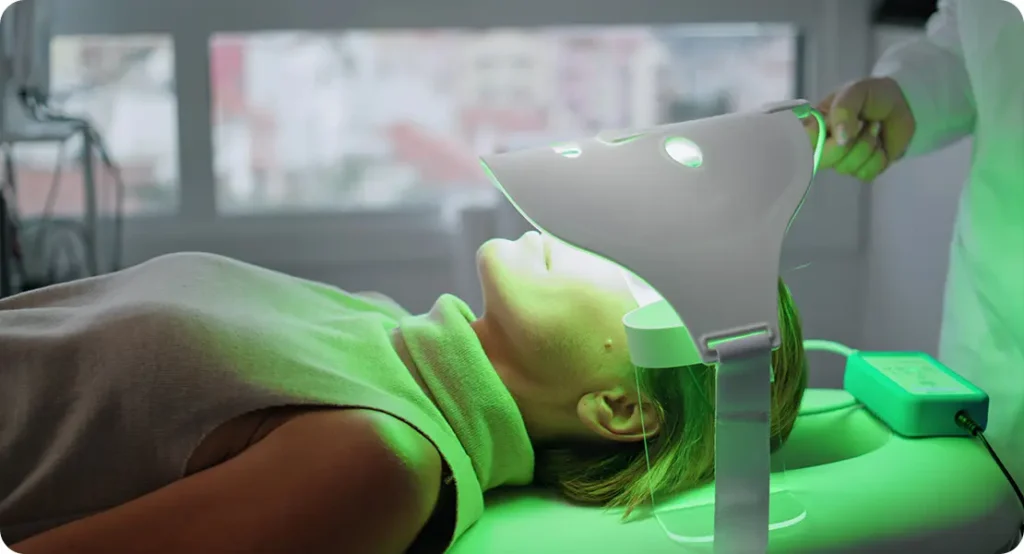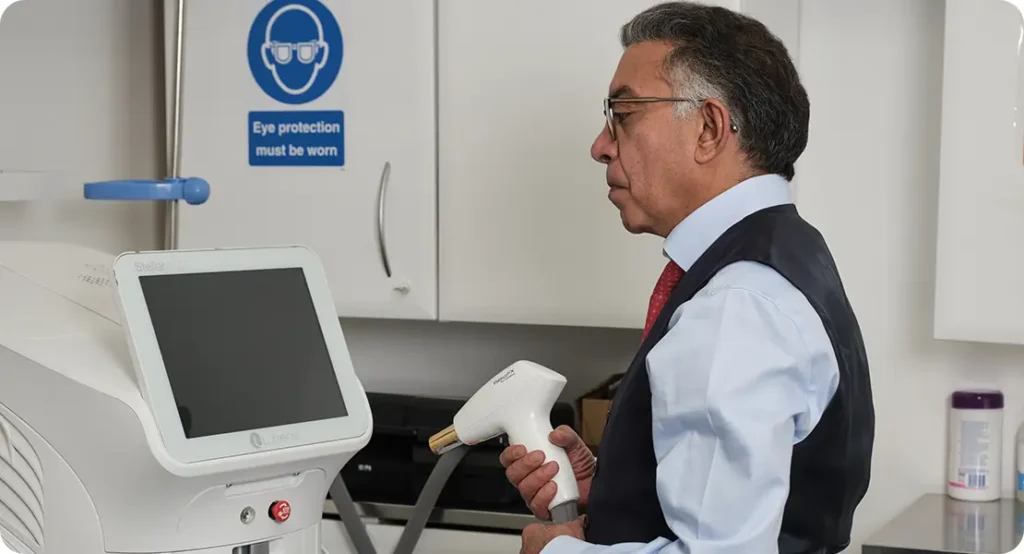Let’s be honest—most people haven’t even heard of photodermatology until they’re told they need to see a specialist. It sounds technical, a bit science-y, and maybe even a little intimidating. But actually, photodermatology is something that touches many of our lives, especially if you’ve ever had a rash that flares up in the sun, skin that reacts oddly to light, or you’re dealing with a condition like polymorphic light eruption (PLE) or solar urticaria. So, let’s break it all down.
What Exactly is Photodermatology?
Photodermatology is a subspecialty of dermatology that focuses on how light affects the skin. That includes sunlight, of course, but also artificial light sources, such as lasers or fluorescent bulbs. A photodermatologist is a dermatologist with additional expertise in diagnosing and managing conditions caused or worsened by exposure to light.
Light-related skin problems can range from the mildly annoying to the truly debilitating. Think of people who get itchy, blistering rashes just from stepping outside on a sunny day, or those whose lupus flares up dramatically under UV exposure. Photodermatologists are the ones who help make sense of these responses and figure out how to treat or manage them.
They also use light as a treatment tool—like phototherapy for psoriasis, eczema, and vitiligo. So, while they’re experts in how light can cause skin problems, they’re also trained in how to use it to treat certain skin conditions.
Why Is Light So Important in Dermatology?
You might be surprised at just how much of an impact light can have on your skin. It’s not just about sunburn. Ultraviolet (UV) radiation from the sun can alter DNA in skin cells, contributing to premature ageing, pigmentation disorders, and even triggering autoimmune reactions. For some people, even visible light or infrared radiation can provoke symptoms.
The skin isn’t just a passive barrier; it’s a responsive organ that reacts to light in a number of ways. For example, some skin conditions like rosacea and melasma worsen with sun exposure, while others are actually improved by controlled UV light therapy. That’s why understanding the relationship between light and skin is such a big deal in dermatology.
Photodermatologists are trained to distinguish between phototoxic reactions (which happen when a chemical reacts with light to damage the skin) and photoallergic reactions (which involve an immune system response). They also run tests—like photopatch testing or phototesting—to identify what’s really going on with a patient’s skin when light is involved.
Common Conditions Photodermatologists Diagnose and Treat
Now, let’s talk about the kinds of problems that usually bring people through the photodermatologist’s door. You might be surprised at how varied they are.
1. Polymorphic Light Eruption (PLE)
This is one of the most common light-induced skin conditions. PLE typically shows up as an itchy, bumpy rash shortly after sun exposure—especially in spring or early summer. It often appears on the neck, chest, and arms.
2. Chronic Actinic Dermatitis
This is a more severe, long-term reaction to light. The skin becomes red, scaly, and thickened, often resembling eczema. It’s most common in older men and is tricky to manage.
3. Solar Urticaria
This is an allergic reaction to UV or visible light. It causes hives within minutes of exposure, which can be incredibly distressing. Some people with this condition avoid daylight altogether unless they’re fully covered up.
4. Photoaggravated Dermatoses
Some conditions like lupus erythematosus, rosacea, and dermatomyositis are made worse by sun exposure. Photodermatologists help patients manage these flare-ups and protect their skin.
5. Phototoxic and Photoallergic Reactions
These are reactions that happen when certain medications or chemicals on the skin react with sunlight. They can cause anything from redness and swelling to blistering rashes.
Diagnostic Tools Used in Photodermatology
So how does a photodermatologist figure out what’s going on? They don’t just rely on guesswork or standard blood tests. Here are a few of the main diagnostic tools used:
- Phototesting: Controlled UV light is applied to small areas of skin to see how it reacts. This helps determine sensitivity levels and thresholds.
- Photopatch Testing: This is used to detect photoallergic contact dermatitis. It involves applying substances to the skin and then exposing those areas to UV light to check for a reaction.
- Light Source Analysis: In some rare cases, analysis of the patient’s work or home light sources might be needed to identify the trigger.
- Skin Biopsy: Sometimes, a biopsy helps rule out other conditions and confirms a diagnosis.
Common Questions Photodermatologists Get Asked
Right, now let’s get into the juicy bit—the real-world questions people ask during consultations. If you’ve ever wondered any of these yourself, you’re not alone.

1. Why do I break out in a rash every time I go in the sun?
This is a question photodermatologists hear all the time, and the answer often points towards a condition known as Polymorphic Light Eruption (PLE). It’s a type of photosensitivity where the skin reacts abnormally to sunlight, particularly after the first few exposures in spring or early summer. What’s actually happening is that the immune system becomes overactive in response to UV-modified skin cells, causing an inflammatory response that shows up as red, itchy bumps, blisters, or plaques.
The rash usually appears on areas that aren’t used to sunlight—like the upper chest, shoulders, and forearms—after a short time outdoors. Interestingly, this reaction isn’t an allergy in the traditional sense, but more of an exaggerated immune response. Some people find that their skin ‘hardens’ over time, meaning that later in the summer, they may tolerate sunlight better. However, for many, the condition returns year after year.
Photodermatologists can confirm the diagnosis with phototesting, which involves exposing small areas of your skin to controlled UV light to see how it reacts. Based on this, they’ll usually suggest a comprehensive management plan. This often includes broad-spectrum sunscreens, UV-protective clothing, light desensitisation therapy to gradually increase tolerance to UV light, and sometimes medications like corticosteroids or antihistamines to calm inflammation. Each case is different, so the treatment is usually tailored to the individual.
2. Can sunscreen alone protect me if I’m photosensitive?
While sunscreen plays a key role in protecting your skin, it’s rarely enough on its own if you’re dealing with a light-sensitive skin condition. Most over-the-counter sunscreens are formulated to block UVB rays, which are the main cause of sunburn, and some UVA rays, which penetrate deeper into the skin. However, they often don’t provide coverage against the full spectrum of light, including visible and infrared light—both of which can cause problems for people with certain photosensitive conditions.
Some types of light-sensitive reactions, like solar urticaria or photoaggravated lupus, may be triggered not only by UV light but also by visible wavelengths. This means that unless your sunscreen includes physical blockers like zinc oxide or titanium dioxide, you might still experience flare-ups. These mineral-based sunscreens create a barrier that reflects light rather than absorbing it, offering broader protection. But even then, sun exposure through windows, water, or clothing might still be enough to provoke a reaction.
To truly protect photosensitive skin, a combination approach is usually best. This might include UV-filtering sunglasses, wide-brimmed hats, and long-sleeved UPF-rated clothing. Some photodermatologists also recommend specific supplements, like polypodium leucotomos extract or nicotinamide, which may help bolster your skin’s natural defences. Ultimately, your protection plan needs to match your unique condition, lifestyle, and exposure habits—something that a photodermatologist will help you customise.
3. Are there any treatments that can reduce my skin’s sensitivity to light?
Yes, and one of the most effective approaches is something known as photohardening. This involves gradually increasing your skin’s tolerance to UV light through short, controlled exposures. It’s usually done in a clinical setting where the amount and type of light can be precisely measured. The idea is to ‘train’ your skin and immune system to respond less aggressively when exposed to natural sunlight. It’s especially helpful for conditions like PLE, where early-season sun exposure is a trigger.
The process typically starts with very brief UV sessions—just a few seconds—and gradually builds up over a couple of weeks. This not only strengthens the skin’s natural defences but also reduces the risk of sudden flare-ups when you’re eventually exposed to sunlight outdoors. While photohardening isn’t a permanent cure, it can make a significant difference in your day-to-day life, allowing you to enjoy more outdoor activity with fewer symptoms.
In more persistent or severe cases, photodermatologists may also prescribe medications to help control your skin’s overreaction. These might include hydroxychloroquine (commonly used for lupus), antihistamines, or even short courses of topical corticosteroids. But it’s not a case of throwing medication at the problem; the treatment has to be tailored based on the underlying cause, the severity of symptoms, and how your skin has responded in the past. Ongoing monitoring is key to finding the right balance.
4. Is light therapy safe for everyone?
Light therapy, or phototherapy, is widely used in dermatology for conditions like psoriasis, vitiligo, and eczema. However, it’s not suitable for every patient, especially those with certain underlying health issues. People with a history of skin cancer, particularly melanoma, or those with severe forms of photosensitivity—like xeroderma pigmentosum or lupus erythematosus—may be at increased risk of side effects or complications from exposure to therapeutic UV light.
Before beginning phototherapy, a photodermatologist will usually carry out thorough assessments to determine whether the treatment is appropriate. This may include phototesting to establish your skin’s UV sensitivity threshold and screening for any contraindications. The aim is to strike a balance between therapeutic benefit and safety. Even for people who are generally suitable candidates, the treatment needs to be monitored closely to avoid overexposure, burns, or pigmentation issues.

It’s also worth noting that light therapy comes in different forms—narrowband UVB, PUVA (psoralen + UVA), and visible light therapy, to name a few. Each type has different risks and benefits, and some may be more suitable than others depending on your specific condition. In some cases, lower-risk alternatives like topical treatments, systemic medications, or lifestyle changes may be recommended instead. Your photodermatologist will guide you through all the options.
5. Could my medication be making me more sensitive to sunlight?
Yes, and it’s something that often catches people by surprise. A wide range of medications can make your skin more sensitive to sunlight—a phenomenon known as drug-induced photosensitivity. This sensitivity might present as exaggerated sunburn, a rash, or even blistering, depending on the drug and your individual reaction. It’s not limited to prescription medicines either; some over-the-counter treatments, herbal remedies, and topical products can trigger similar issues.
Phototoxic reactions usually happen when a drug or chemical absorbs UV light and causes direct damage to skin cells. This tends to appear within hours of sun exposure and can be quite painful. Photoallergic reactions, on the other hand, involve the immune system and may show up as itchy, eczema-like rashes days after exposure. Common culprits include antibiotics like doxycycline, non-steroidal anti-inflammatories, certain antihistamines, and even some acne medications.
If a photodermatologist suspects your medication is behind your symptoms, they’ll typically conduct a detailed history of everything you’re using—both internally and topically. Depending on the findings, they may suggest discontinuing or switching the medication, adjusting the dosage, or implementing stricter sun protection measures. In some cases, the medication is essential and can’t be stopped, so they’ll work with you to minimise the risks and manage your skin as safely as possible.
6. How do I know if my rash is caused by light or something else?
It’s not always easy to tell, especially since skin rashes can be caused by a variety of triggers—from allergens and irritants to infections or underlying autoimmune diseases. But if your rash consistently shows up in areas exposed to the sun, like the neck, forearms, or face, while covered areas remain unaffected, that’s a strong clue light might be the trigger. Timing is another giveaway—rashes that flare up shortly after sun exposure and settle when you stay indoors often point towards photosensitivity.
Photodermatologists use a combination of investigative tools to get to the root of the problem. Phototesting helps determine how your skin reacts to specific wavelengths of UV and visible light. Photopatch testing goes a step further by identifying whether certain chemicals—like those in perfumes, cosmetics, or topical medications—become allergenic only after exposure to light. A thorough medical and lifestyle history also plays a key role in making an accurate diagnosis.
Sometimes, it’s not just one thing causing the issue. For example, you might be using a face cream with bergamot oil, which is fine indoors but becomes a problem in sunlight. Or maybe your antihypertensive medication is subtly contributing to your skin’s reactivity. That’s why specialist input is so important—photodermatologists are trained to spot patterns and dig deeper when the cause of a rash isn’t immediately obvious.
7. What’s the best way to prevent light-related skin flare-ups?
Prevention is key when it comes to managing photosensitive skin conditions, and it usually requires a combination of strategies. First and foremost is strict sun protection—broad-spectrum sunscreen with high UVA and UVB protection should be applied daily, even on cloudy days or when you’re mostly indoors but near windows. Reapplication is just as crucial, particularly if you’re sweating or swimming, as most sunscreens lose effectiveness after a couple of hours.
Clothing is your next line of defence. Opt for long sleeves, wide-brimmed hats, and UV-protective fabrics whenever possible. Don’t forget sunglasses that block 100% of UVA and UVB rays, especially if you’re prone to light-triggered eye or facial symptoms. Staying in the shade and avoiding sun exposure during peak hours (usually between 11am and 3pm) can also make a big difference. For people with more severe sensitivities, window films and UV shields for indoor lighting may be necessary.
Managing triggers often means making lifestyle tweaks. You might need to avoid certain skincare products, fragrances, or even medications that make your skin more reactive. Some people benefit from dietary supplements that support the skin’s natural barrier and antioxidant defences. Photodermatologists can help you develop a tailored prevention plan that balances effectiveness with practicality—because the goal isn’t just avoiding flare-ups, but also maintaining a good quality of life.
What to Expect at a Photodermatology Appointment
If you’ve never been to a photodermatologist before, you might not know what to expect. Typically, you’ll start with a detailed discussion of your symptoms, how they behave in different lighting conditions, and any relevant medical history.

You might then be referred for tests like photopatch testing or phototesting. The appointment could also include:
- A review of any skincare products you’re using.
- An assessment of how much time you spend outdoors.
- Discussion around protective measures and treatment options.
The goal is to get a full picture of how light affects your skin and come up with a strategy that works for your lifestyle.
When Should You See a Photodermatologist?
Here’s the thing—most people don’t need to see a photodermatologist unless they’re experiencing ongoing or severe skin problems that seem linked to light. So, if you:
- Get regular rashes after sun exposure,
- Have a condition that worsens in the summer months,
- React badly to medications when outdoors,
- Or have unexplained pigmentation or blistering,
…it might be worth asking your GP for a referral to a photodermatology clinic.
Final Thoughts
Photodermatology might sound niche, but it’s actually a lifeline for people struggling with light-related skin conditions. Whether it’s diagnosing tricky rashes or offering cutting-edge therapies, photodermatologists help patients understand and manage the complex relationship between skin and light.
If any of this sounds familiar—maybe you’ve been dealing with unexplained sun-related skin issues for years—don’t brush it off. There’s a whole field dedicated to helping people like you, and relief might just be a consultation away.
If you’re concerned about light-related skin problems, you can contact us at the London Dermatology Centre to book a consultation with one of our expert dermatologists.
